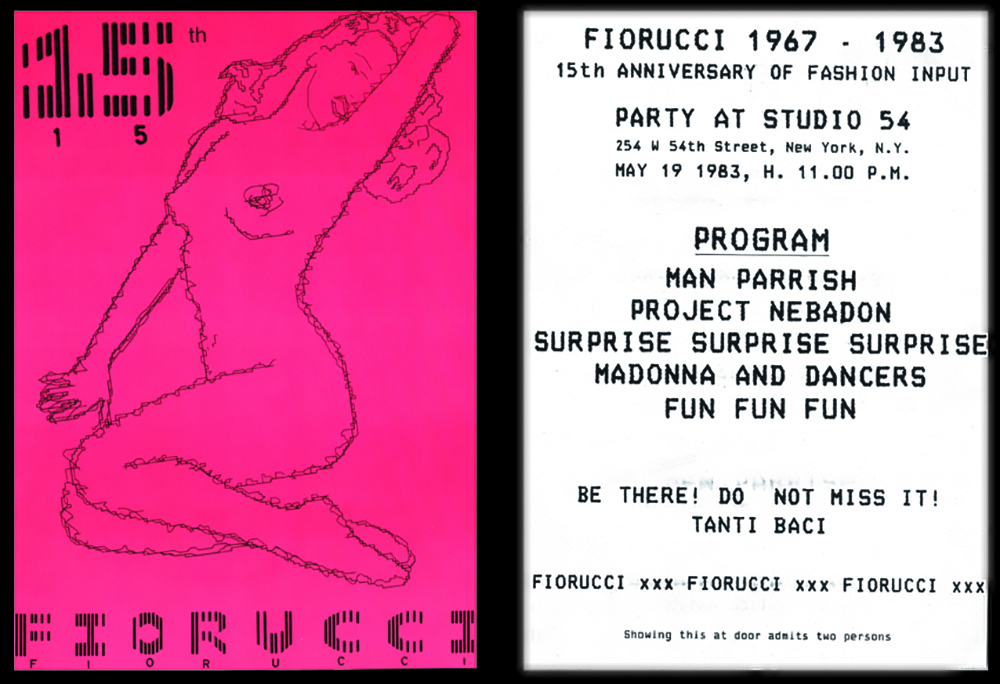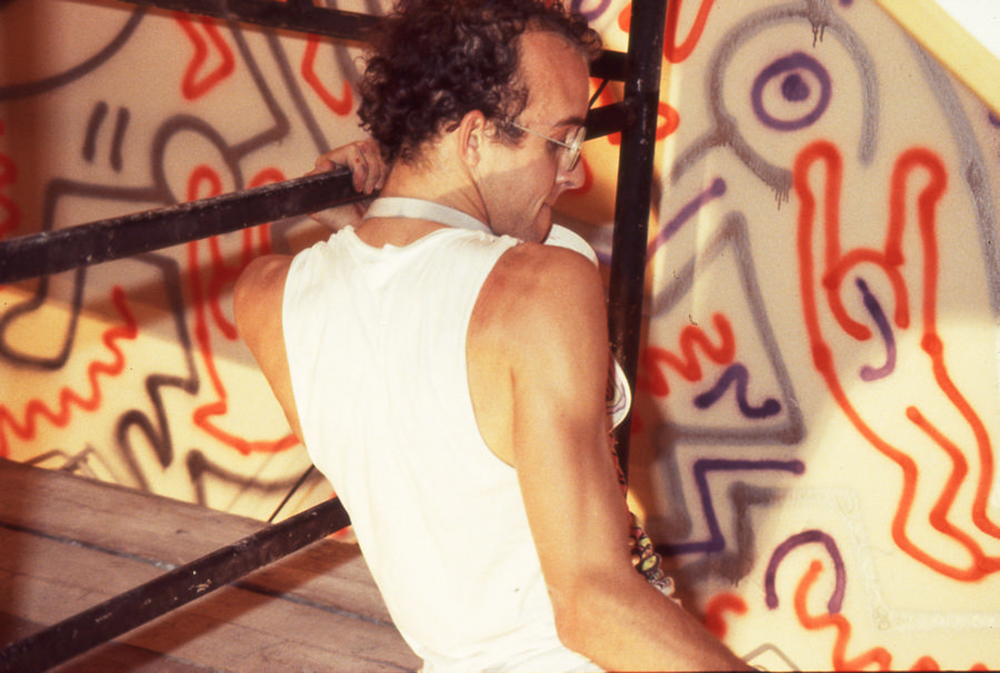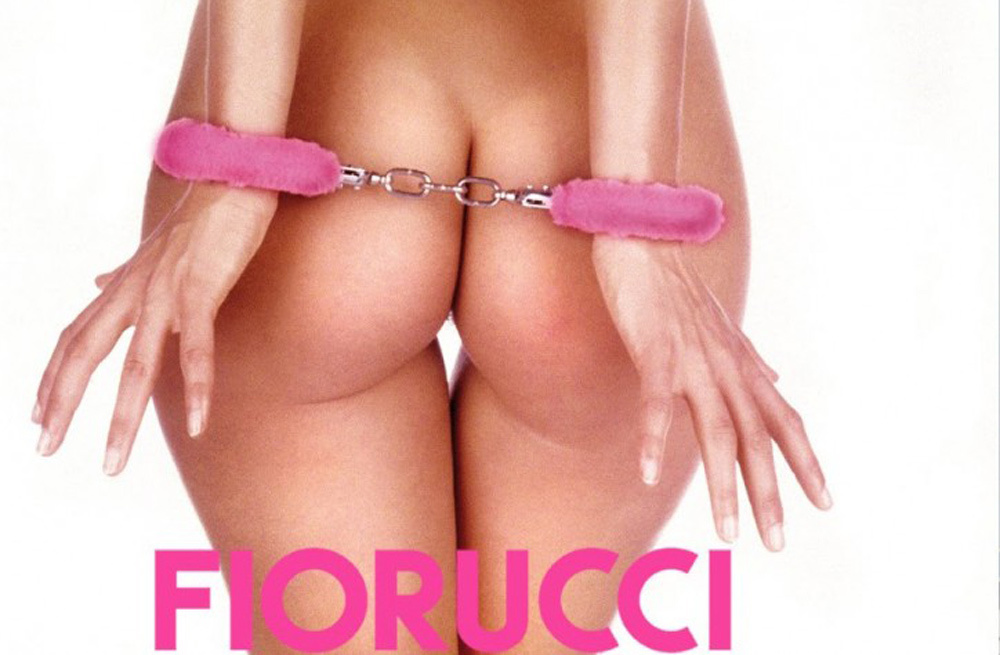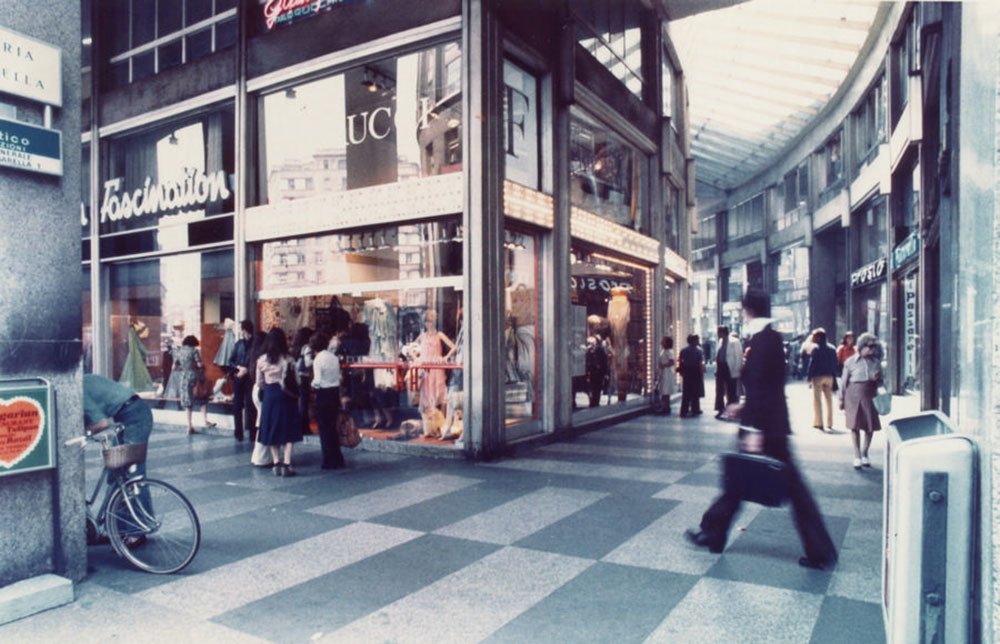When the closing of Fiorucci’s flagship store in Milan’s Galleria Passarella was announced in March 2003, it felt like an era was coming to an end. Elio Fiorucci was gone and had been replaced by the fast fashion colossus H&M. Some know Elio for his angels, some for his Love Therapy, for his animalistic positions or for his provocations–whether they were women’s naked breasts or hot pants–and for having freed Milan’s fashion from haute couture. Some see him as a friend to the greatest pop artists, others as a pre-social media cool hunter, as an innovator and a trendsetter. “He is the master of us all,” Vivienne Westwood said.
He brought London’s swinging 60s to Milan, and Italian fashion to New York, introduced i-D’s Terry Jones to Madonna, who put her on the cover, and helped form the visual identity of New York’s queer disco underground. Elio Fiorucci made history.

Where does your creativity come from?
Certainly my artistic history started in my childhood. Nothing is written in life, or perhaps instead it’s all written? I believe we already have a script and then we have decisions to take, impulses and choices.
I was born on June 10, 1935, in an unlucky period for the human race, because a few years later World War II would break out. After a bombing in Milan, my parents and I fled from the city. We feared the world would end. I owe it all to the good sense of my family. We went to live with an aunt in the countryside close to Lake Como—I found a heaven on earth there. Back then, schoolmasters were very strict and I didn’t like this attitude at all. Unlike my brother, I loved nature, animals, and spent most of my time living inside my head, creating my own stories. Everything surprised me. I looked at the simplest things with passion, the way children do. As a child it was clear to me that we are all animals and that the cycle of life applies to everyone in the same way. I chose to think for myself, refusing any external help, and questioning the mysteries of life. Religions can’t offer you a solution but they can guide you—but my family did not have faith. In the countryside, I found my creative seed.

At 17, you started working in the family business. How do you remember the beginning of your career?
In Milan, my parents had a shoe shop. We were five brothers, all “good guys” except me. All of them were fond of studying, doing well at school, and my father was crazy for the classics. I fell in love with The Odyssey, and Odysseus’ journey and the places he discovered. I loved exploring, everything was moving, taking me elsewhere. That’s why I became a traveller. I soon understood that every situation is different and that in the world there are many cultures, religions, peoples and different faces. This has always fascinated and inspired me. As a young man I decided to go and explore London.
Strolling around Carnaby Street, Kensington Market, I found Barbara Hulanicki and her shop, which I took as my first true inspiration. I discovered markets where young people from all over the world were bringing objects they had found, they used a simple stall as a store. They kind of anticipated our contemporary ideal shop! The work of the “merchant” is one of the most interesting in the world.
When I was a schoolboy, whenever I could I escaped from school to our store to help out. My father tried to make me understand all the effort that it took to dissuade me from going into the business—but I just loved the job. I liked the colors, the smiling faces of the people, looking around and seeing what was happening in the streets. The streets of Milan were my school, where I learned everything.

Your brand was born out of a pair of shoes you invented, which Amica’s editors fell in love with. In 1967 you opened your store in San Babila and in 1974 one in Turin, with a space dedicated to performance and a restaurant. How was Milan back in those days?
When my father died I took over the company and started to open stores, it became a considerable success. I liked my job a whole lot because I had to be on the move all the time, I had to continue researching to create new collections.
I loved being around people and talking to people—I was born shy and quiet , but when I started working in the family store I went through a change, since other people were smiling and talking to me. As a child, I based my relationships with others on kindness, as my father had taught me to. I wanted people to find what they came for, to be happy and spend little money to get exactly what they wanted. Because in the end, the best thing in the world is to be loved.
The greatest need of man is to be loved. I treasured all these experiences and I poured them into my work. On May 31, 1967, I opened my first shop in Milan, designed by Amalia Del Ponte, and modeled on Biba in London. I wanted to change fashion, to include rather than exclude. It soon built a reputation as a good store, where you could find kind and attentive people to help you. Customers became our friends. When I created my store, I always remembered the kindness. The orders will be welcomed at the door thanking you for entry and greeted you with a “Come and see us soon because it has been a pleasure.”
I wanted to keep on proving to people that I loved them, and so in 1970 I created the logo with the two little angels on a Victorian image adapted by Italo Lupi.

Fiorucci soon became an industrial brand with a worldwide distribution. You used to gather your talent scouters at your offices in San Donato—they were travelers with the task of discovering the objects that would be sold in the shop. How were decisions made?
The choices were up to me, along with my sister. At a certain point, everything that appealed to us the public also seemed to like, I don’t know why? We were never wrong. We were all going around the world and finding unseen things. Then it became a job. With the shop, many guys went around the globe talking about us, and then came back to Italy carrying new stuff from America, Japan, South America…
I remember a trip to Mexico with my wife. It was there that I saw for the first time shirts with floral patterns. Our novelty resided in the fact that we changed the context of things. But they were beautiful in itself.
In 1975, you opened your first London shop in Kings Road, and in 1976 Fiorucci on 59th Street in NYC. How would you describe that world?
After London and many other countries, I decided to open my shop in New York. My close friend Anita Paltrinieri told me about a beautiful space on 59th street. So I called Sottsass, Branzi and Mirabelli to go and check the space and design the store. After we’d been open for a few days, Andy Warhol came to the store because he was curious and fascinated by the novelty. In fact, he wrote in his memoirs : “Went to Fiorucci, it’s a fun place. That’s all I ever wanted, all plastic… ” We became friends. When, in 1977, he opened the Studio 54, I was the one in charge of organizing the opening of the restaurant—attended by people like Bianca Jagger, Margaux Hemingway, Grace Jones, and Andy himself, on that first night. I remember him as a kind and simple man, and a genius too! Still my friend Mary Pole told me he has been more impressed by me than the other way around!

You were the first person to bring jeans to Italy. When did you realize they were going to take off?
Jeans changed the world. One day I was driving in my car with my wife in Ibiza and between the scattered cottages we saw some beautiful topless girls wearing their jeans diving into the water—their jeans completely stuck to them, resulting in such beautiful legs and bums. They were not just women, but indigo blue statues.
It became one of my obsessions: this idea that women should not wear jeans made for men, but should have their own. So once I returned to Milan I bought a roll of denim, a shrinking, elastic fabric. It became our greatest success. All women lined up to buy our jeans, they wanted to show off their legs while keeping them covered. Feminine beauty must be preserved. Nature is awareness and awareness of eroticism is one of the greatest things in life. Sex, affection, falling in love, adoration—they are the important things.
That model of jeans evolved, some models were cut to show a little back, for some other models we used faux leather—because I’ve always fought for the rights of animals—and then we made overalls like those from Flash Dance.

You are famous for your provocative ads. In 1974 you launched bikinis, monokinis and thongs in Italy. Some people tried to cover and censor posters and stickers. In 1995 Roger Corona shot an even more shocking campaign: for the first time a woman posed naked wearing only fur handcuffs. What is your view on the relationship between a naked body and vulgarity?
Vulgarity is not measured in centimeters of cloth. We are born naked, all dressing is hypocrisy. A man in a tuxedo can be vulgar. A naked woman is a creature of God. I still remember when the police stormed into my office to seize the stickers for the monokini campaign. In my life I have always tried to free the naked body from vulgarity.
What piece of advice would you give to young people?
To be yourself. Whatever the way, just be true to yourself.
Credits
Text Eloisa Reverie Vezzosi
Images courtesy Elio Fiorucci
